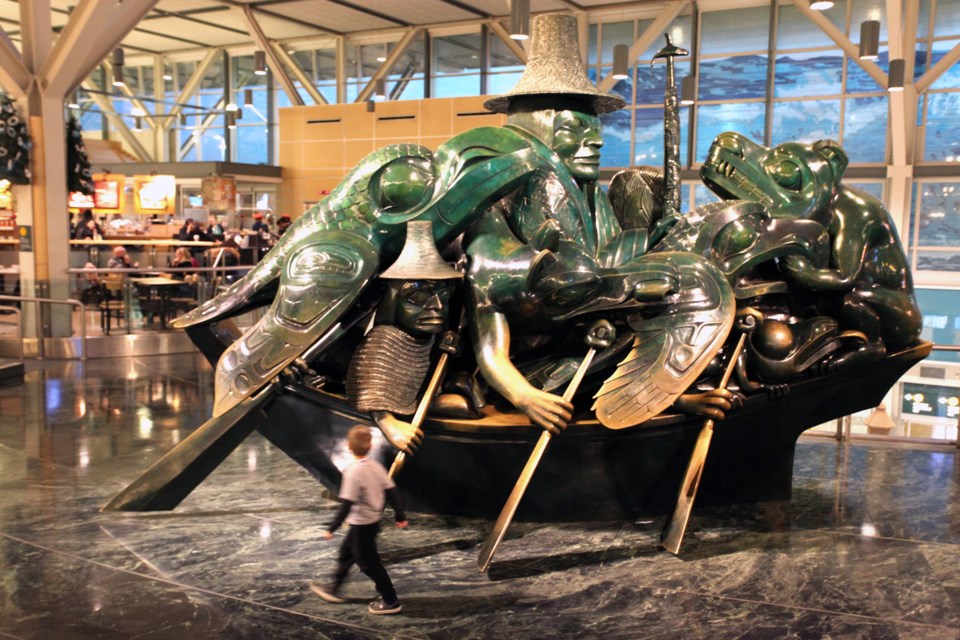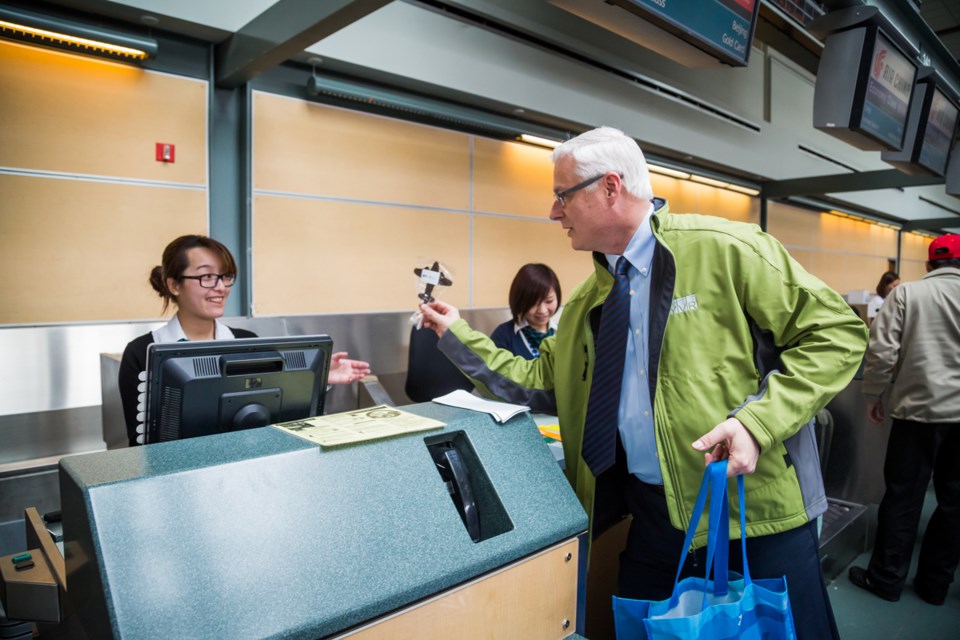Craig Richmond is used to seeing things take off. As president and CEO of Vancouver International Airport it kinda comes with the territory.
But last week, when YVR was named the best airport in North America for the seventh consecutive year in a row, he said he managed to see a little more than just a steady rise.
“You know, if we were a sports team it would be a dynasty,” Richmond quipped. “We really appreciate the acknowledgement and about 10 seconds after you win you start thinking about how we get even better and stay on top.”
That, Richmond said, is one the main keys behind the consistent success YVR has enjoyed in being a frequent winner in the Skytrax World Airport Awards that are based on 13.2 million passenger surveys conducted in 555 airports around the world.
Richmond said YVR is not chasing the award.
“We’re just trying to provide the best airport, the best experience possible,” he said, adding there’s no specific winning formula when it comes to trying to do well in the survey.
“It’s hard to describe because this is one of those surveys that we’re not even sure when it takes place. It’s over at least six months, and I’ve even heard as long as eight months. There’s 13 million people who vote, and it’s across 39 separate categories,” he said. “So, it’s pretty hard to focus on any one thing, because if you don’t end up in the top one or two in those categories, you’re not going to win.”
That means all of the services the airport provides the 20 or so million people who pass through the Sea Island terminals have to be at their very best, all the time.

“The formula is thinking about every part of the customer’s journey and how to make it easier, better, cleaner and more friendly in every way,” Richmond said. “And then we have to continue to do that as we add a million passengers a year.”
In that department, YVR has shown dramatic increases since it took over operations in 1992 from Transport Canada.
In the first year of running the airport, YVR had just under 10 million passengers pass through the terminal buildings.
In 2015, that figure had soared to 20.3 million.
The only times YVR has experienced a drop in passenger traffic was a three-year stretch following the 911 events in New York City that sent a chill through the global air travel industry, and a slight two-year dip after the stock market correction in 2008.
With sights set firmly on handling 25 million passengers by 2020, Richmond said YVR will continue to try and improve on it’s core business of moving people and goods through the Sea Island terminals.
But, with all the accolades and rising passenger numbers, is there a chance the Airport Improvement Fee (AIF) will be scaled back or even removed entirely from YVR?
Richmond said no.
“There was maybe a misconception at the beginning, and there was a lot of controversy when we brought it in, that OK, we will get to a certain level (passengers) and stop, ” he said. “But what happens when you add millions of more passengers and have new airlines come on you’ve got to continue to both upgrade what you have and build new.”
Richmond pointed out that YVR’s AIF is the lowest of all major airports in Canada.
“Calgary and Edmonton are $30, we’re at $20,” Richmond said.
And YVR has managed to reduce landing and terminal fees for the airlines touching down here.
“We’re doing everything we can to induce more carriers to come here,” he said, “because that brings more jobs to the airport and the local economy.
“No, the AIF is not going away. But we are very cognizant of using it wisely.”
On the subject of
“We’ll stick to our core business, which of course is to move people and airlines very efficiently. So, we can increase the positive economic impact for British Columbia.
“Yes, one of our goals is to get to 25 million passengers, and so far we are on track to have that by 2020.”
“One of the reasons we do things like the designer outlet mall is as a non-for-profit corporation any money we make goes back into running the airport.”
Another money spinner for YVR that is more linked with travel is the development of automated passport kiosks that have been sold across North America and the Caribbean.
“We’re always looking at expansions,” Richmond said. “This year, we’ll hit 21 million passengers, while the terminal was designed for 25 (million). So, now we’re looking at how to expand the terminal to accommodate that growth so people won’t feel crowded and so we can actually gate all the extra aircraft we will be getting.”
All the while, the goal is to also preserve a nice sense of space inside the sprawling terminal.
“We want to keep that relatively small airport feel,” he said.
YVR ranked third in the world in that 20 to 30 million passenger airport category, behind Kansai (Osaka, Japan) and Zurich (Switzerland) airports.



